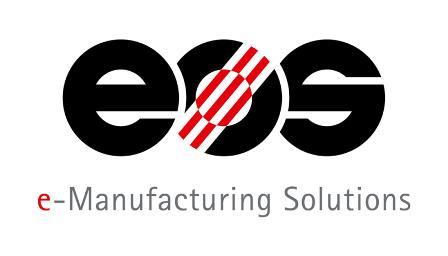 When operating at the desktop, just think of how much effort can go into one build. From uploading your design to deciding on materials and settings, and then giving your printer the green light, most of us continue to hover, even waking up in the middle of the night listening out for that comforting whir of the machine. It’s certainly a rotten feeling to approach the computer or printer and discover errors are plaguing you, or a print has failed in an epic way.
When operating at the desktop, just think of how much effort can go into one build. From uploading your design to deciding on materials and settings, and then giving your printer the green light, most of us continue to hover, even waking up in the middle of the night listening out for that comforting whir of the machine. It’s certainly a rotten feeling to approach the computer or printer and discover errors are plaguing you, or a print has failed in an epic way.
Now, translate all of that onto the larger, industrial scale. For companies using additive manufacturing in an industrial capacity, there’s not much room for error—and definitely none for surprises (not the bad ones anyway!). This is, however, still a fledgling industry, and especially for those who have moved out of using 3D printing primarily for prototyping and are actually using the technology to create functional components. Gradually, what we are seeing it that monitoring systems and quality assurance processes are being put into place, and with great success, from Skiaky to Sigma Labs. In terms of the evolution of these processes, however, one company we’ve followed continually is EOS—as they’ve established themselves as world leaders also in the area of QA.
Headquartered in Germany, and famous for their knowledge in additive manufacturing—especially in metal—EOS is now announcing both the completion and the success of the EOS MeltPool solution. With this achievement, they are reaching their goals in expanding their monitoring solutions, as well as offering even greater transparency in the additive manufacturing process. This monitoring system was announced late last year, and EOS has certainly made rapid strides in seeing that their customers are able to monitor AM processes during—rather than after.
“The decisive factor for customers on the road towards series manufacturing based on AM is reproducible top-quality parts at the lowest costs per part possible,” said Lukas Fuchs, Application Development Consultant, MeltPool for Monitoring Solutions at EOS. “The EOSTATE MeltPool Monitoring allows to move part quality assurance from post- to in-process, as such not only supporting a better risk management, but as well reducing time and costs for quality assurance and as a consequence overall costs per part.”
“It is a powerful expert tool to those who need to improve their quality assurance procedures for AM and who want to build up deeper insights into the DMLS process to further support process development.”
And of course, a monitoring program would not be completed without being tested by clients first. TUSAS Engine Industries Inc. (TEI), a leader in aviation engines for Turkey, is depended on for high-quality products and services. They were one of the companies asked to assist in testing during the pilot phase.
“We consider the EOSTATE Meltpool monitoring system as an initial step for online control and part quality inspection. As such, it was part of our initial technical specifications for the DMLS process and we felt privileged to be one of the first pilot customers to test it,” said Semih Pilatin, Technology Programs Manager at TEI.
“We are planning to use this tool for aerospace engine parts manufacturing where tight tolerances and high performance are expected. With this tool, we can capture potential part defects online at an early stage and with minimal effort to assess the part quality.”
This new tool will operate as an add-on to the EOS M290 DMLS system, allowing for comprehensive automation and transparency from the beginning to end of the build process.

Automated melt pool monitoring and analysis during the DMLS build process – every spot, every layer, every part [Source: EOS]
Subscribe to Our Email Newsletter
Stay up-to-date on all the latest news from the 3D printing industry and receive information and offers from third party vendors.
You May Also Like
IperionX Inks 10-Year Deal with Wisconsin Manufacturer for 80 Metric Tons of Titanium Per Year
IperionX, the Charlotte-based supplier of sustainable titanium powders used for additive manufacturing (AM) and metal injection molding (MIM), has signed a ten-year deal with United Stars, a group of industrial...
Gastronology Launches Industrial Production of 3D Printed Food for Dysphagia Patients
Food 3D printing has, in many ways, been an additive manufacturing (AM) segment looking for the right business case. While some applications are beautiful and others may or may not...
Lockheed Martin Leads $3M Investment in Q5D’s Electronics 3D Printing System
Q5D, an original equipment manufacturer (OEM) of robotic arm, hybrid additive manufacturing (AM) systems used for wire harness production, has closed a $3 million investment round. The investment arm of...
3D Printing News Briefs, April 6, 2024: Depowdering, Cybertruck Door Handles, & More
In today’s 3D Printing News Briefs, ioTech’s digital manufacturing CLAD technology is opening up opportunities for microelectronics and additive manufacturing. Hexagon and Raytheon Technologies commercially released the Simufact Additive Process...
































